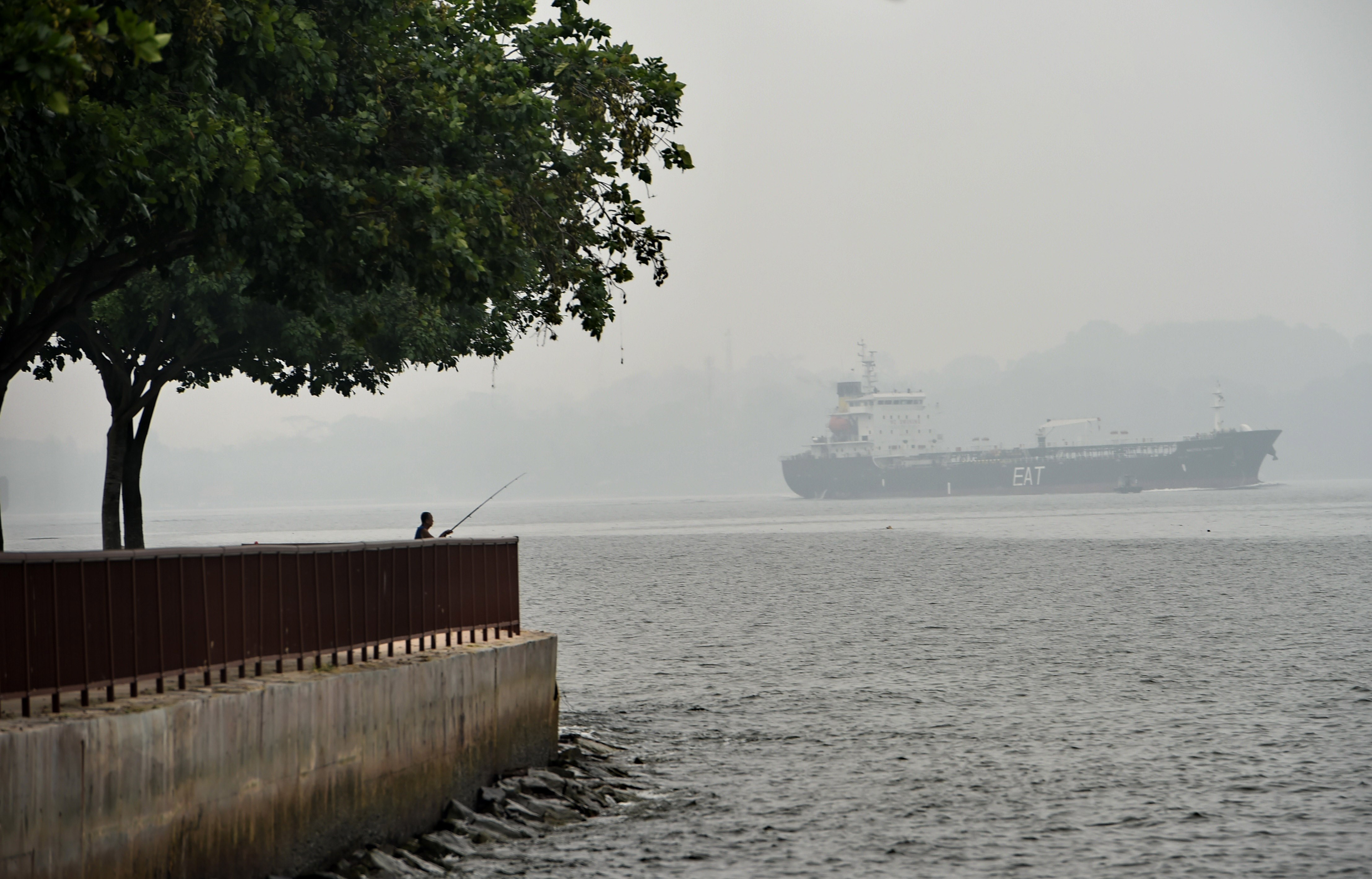Sindo Ferry, which runs a fleet of yellow-and-blue boats across the Singapore Strait, advertises its vessels’ plush interiors. But the best part of the hour-long ride between Singapore and Batam Island, Indonesia, is found outside, past a door marked No Access Crew Only. On an overcast summer afternoon, several cigarette-smoking passengers have found their way to this back deck. The air is warm and windy, thick with the smell of brine. Massive freighters and traditional Indonesian fishing platforms, called kelong, dot the strait. When an actual crewmember comes out to change the ferry’s flags, upon crossing the international border between Indonesia and Singapore, he doesn’t give the smokers a second glance.
The stretch of green sea glimmering below has bustled with commerce for more than a thousand years. As far back as the 600s, it was the watery heart of the kingdom of Srivijaya, Southeast Asia’s first major maritime civilization, which held a monopoly on trade here. Later, through the 15th and the beginning of the 16th centuries, the Malacca Sultanate ruled over a similar area and also derived its wealth from port duties in what are now known as the Strait of Malacca and the Singapore Strait. The waters didn’t function as national boundaries until the Europeans arrived.
In 1824, after Great Britain and the Netherlands conquered parts of present-day Malaysia, Singapore, and Indonesia, the two colonial powers signed a treaty that divided the land and water between them. Throughout their time in power, however, they struggled to control Straits peoples, who moved freely over the new borders, flouting their rulers’ laws about carrying passports and accurately recording ports of call. By the late 1800s, thousands of Southeast Asian Muslim pilgrims crossed the region’s waterways to Mecca each year. They boarded ships that made numerous illegal landings and whose official manifest numbers differed from their actual passenger loads by the hundreds. Two centuries later, the idea of the Straits as national borders has solidified, but not entirely. The three countries share workers and tourists, and, in 2017, more than 18 million nationals from each country visited at least one of the others.
Sindo Ferry passengers have their passports checked and their luggage x-rayed before they board, but they are divided about how meaningful the official boundaries are. Forty-year-old Achadiat Akbar Suryakusuma, who lives in the Indonesia capital city of Jakarta, is coming back from a trip across two national borders (Indonesia-Malaysia and Malaysia-Singapore) to take his children to Legoland. With his glasses and polo shirt, he has the air of a pre-Facebook software engineer. Later, the business card he gives me indicates he’s a manager at a building-materials company.

(Photo: Roslan Rahman/AFP/Getty Images)
We talk on the lower deck of the ferry, where his family takes up two rows of seats. Akbar country-hops frequently, for business and vacations, and thinks borders in the region are “no big deal.” “The borders in here are very easy to reach,” he says. Besides, there is “a brotherhood in the area.” People of similar Malay descent and culture live in Malaysia, Singapore, and some of the Indonesian islands, he notes. This was true during colonial times too. (His own family is of Javanese descent.)
Twenty-seven-year-old Masyita Fadila, who is from the Indonesian island of Sumatra, is making her second-ever Singapore-Indonesia border crossing. The first was to meet her fiancé’s family, who are Chinese Singaporean. This time, it was to marry him. In 11 days, they’re having a second wedding in Indonesia, to certify their marriage there as well.
Masyita is traveling with her parents, who sit in the row in front of her. My translator breaks the ice with the parents, but in the end, Masyita, her 21-year-old sister, Hany Kosasih, and I talk in English, while huge container ships glide past. Masyita met her husband four years ago at a scholarship fair held in Indonesia for students from all over Asia. He had never been to Indonesia before. “I never imagined I would marry a Singaporean,” Masyita says. Even though it’s easy to travel to, Singapore does feel like another country, Hany says. “Once we go there, the atmosphere instantly feels different: the language, transportation, culture, food, and the weather,” she says. Masyita will now live in Singapore, leaving the small restaurant she owned in Sumatra to her mother and sister. She is hopeful that her husband will find her a new job. When I ask if she’ll miss her parents in Indonesia, she scrunches up her eyes and says, “Yeah, of course.” If she had her way, she would fly back every weekend, but the trip isn’t cheap. She plans at least to visit every Ramadan.
Once the ferry docks in Batam, we all must wind through Customs and Immigration, where I get my passport stamped and my index finger scanned. And then, suddenly, we’re in a mall. Sindo Ferry, it turns out, takes you directly from one mall to another. The Batam side is not so different from the Singapore one: It’s a little shabbier, maybe, and has more women in hijabs. But the effect is the same. After a moment in the salty, harborside air, passengers are whisked into an air-conditioned, white-tiled space, where they can exchange their Sing dollars for Indonesian rupiah and begin shopping in the very same stores as they would across the water.





